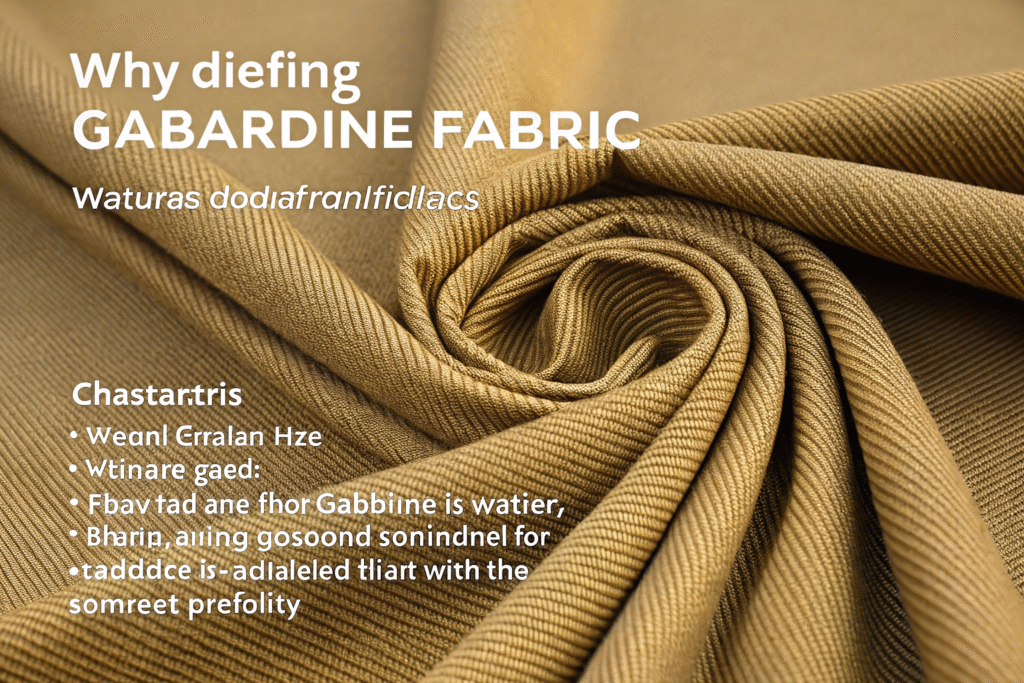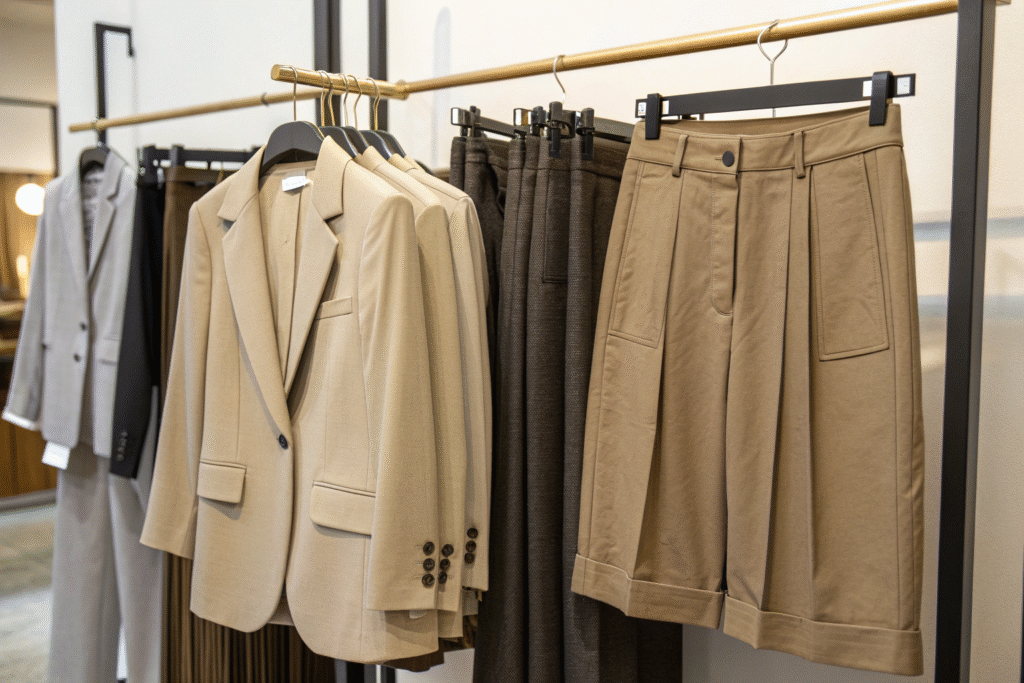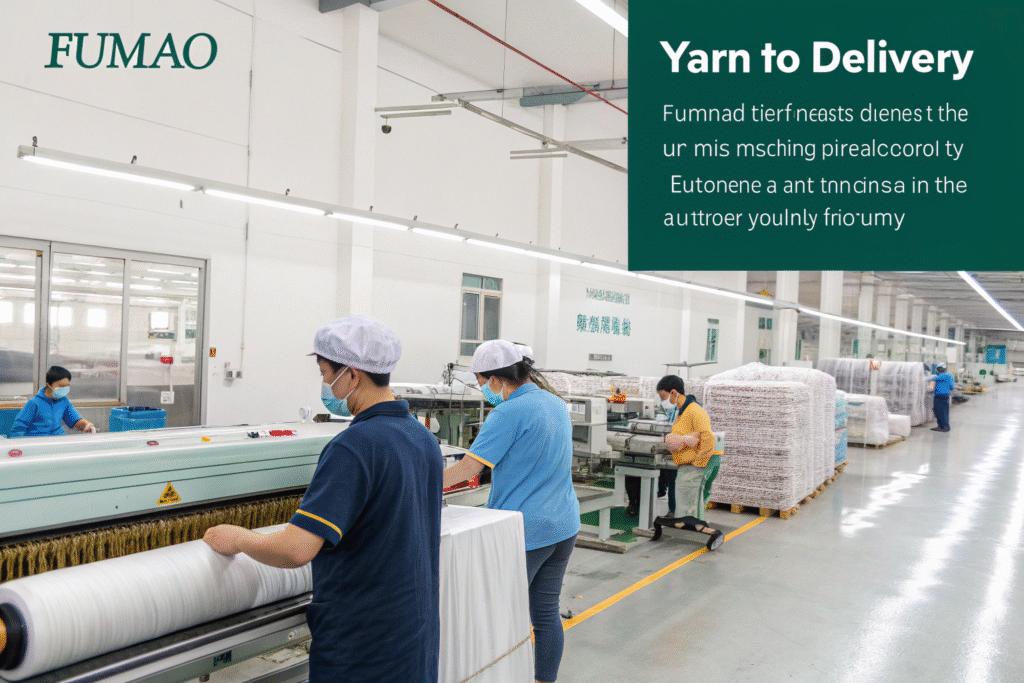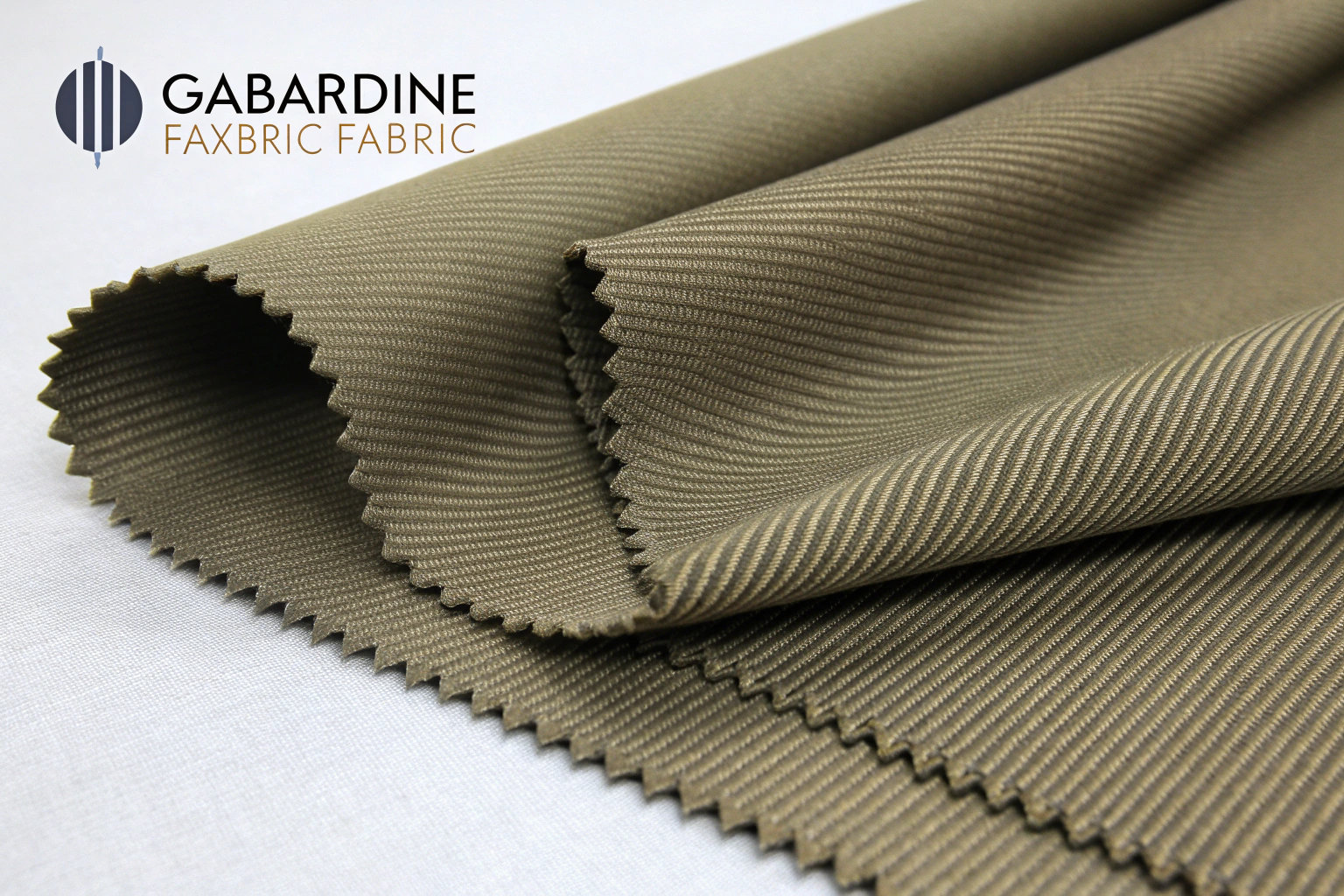As a fabric manufacturer with over two decades in the textile hub of Keqiao, I often get asked by clients like you to define specific fabrics. Gabardine is a classic that consistently comes up in discussions about durable, versatile materials. If you're sourcing fabrics for fashion or workwear, you've likely encountered this term. But what exactly is it, and why does it matter for your next order?
Gabardine is a tightly woven, durable twill fabric, recognizable by its distinct diagonal rib pattern. It is primarily known for its exceptional strength, weather resistance, and smooth finish, making it a top choice for everything from tailored suits and trench coats to uniforms and durable sportswear. Its ability to hold a sharp press and resist wrinkling makes it a perennial favorite for high-use garments.
Let's unravel the threads of this fundamental fabric together. Understanding gabardine's core characteristics will empower you to make smarter sourcing decisions for your collections.
What are the defining characteristics of gabardine?
When you're evaluating fabrics for your line, the devil is in the details. Gabardine's unique set of properties is what sets it apart in a crowded marketplace. Its performance is a direct result of its specific construction.
The most defining characteristic of gabardine is its durable, tightly woven twill structure. This weave creates a strong fabric with a subtle diagonal rib that you can both see and feel. This isn't just about aesthetics; this tight weave is the secret to its natural resistance to wind and water. Furthermore, gabardine is renowned for its excellent drape and ability to hold a crease, which is why it's a gold standard for tailored garments that need to look sharp all day.

What makes the twill weave of gabardine so durable?
The durability comes from the twill weave pattern itself. In a twill, the weft thread passes over and under multiple warp threads in a regular, staggered progression. This creates that classic diagonal line. For gabardine, this weave is executed with a very high thread count, meaning more threads are packed into every square inch. This dense construction makes the fabric incredibly tough and resistant to abrasion. It's far stronger than a plain weave of a similar weight. This is why garments made from gabardine can withstand years of wear and tear, making it a cost-effective choice for uniform fabrics and outerwear that face daily stress.
How does fiber choice impact gabardine's performance?
While the weave is fundamental, the fiber used defines its final character and care. Traditionally, gabardine was made from worsted wool, which gives a crisp, smooth finish ideal for high-end suiting. However, modern gabardine is often made from cotton, polyester, or blends. A cotton gabardine is more breathable and comfortable for spring and summer collections, while a polyester or polyester-wool blend offers superior wrinkle resistance and is easier to care for, which is a major advantage for travel clothing and corporate wear. The choice of fiber allows you to tailor the fabric's weight, sheen, texture, and price point to your specific market needs.
What are the common uses of gabardine fabric?
You might be surprised by how many garments in your own closet are made from gabardine. Its versatility is its greatest strength, allowing it to cross over from high fashion to functional workwear with ease. Knowing its applications helps you pinpoint where it can fit into your product lineup.
Gabardine's primary uses are in tailored clothing, outerwear, and uniforms. Its sharp appearance and durability make it the perfect fabric for garments that need to look professional while standing up to frequent use. Think of the classic trench coat—a hallmark of gabardine—or the sleek trousers in a business suit. Its resistance to scuffing and staining also makes it a logical choice for school uniforms and corporate attire.

Why is gabardine a top choice for tailored garments?
In the world of tailoring, the ability of a fabric to hold a shape is paramount. Gabardine's dense, tightly woven structure allows it to be pressed with sharp, clean creases that last. Unlike softer fabrics that can lose their shape, gabardine maintains the integrity of a suit jacket's lapel or a trouser's leg line throughout the day. This makes it a superior choice for business attire and formal wear where a polished appearance is non-negotiable. Its medium weight provides enough substance for structure without being overly heavy, making it suitable for year-round wear in many climates.
Where does gabardine excel in functional and fashion outerwear?
Gabardine's history is deeply rooted in functional outerwear. Its inherent resistance to wind and light rain, due to its tight weave, made it the original fabric of choice for the iconic Burberry trench coat. This functionality has seamlessly transitioned into modern fashion. Today, you'll find gabardine used in everything from classic trench coats and windbreakers to fashionable jackets and caps. It provides that perfect blend of utility and style—offering protection from the elements while maintaining a sleek, sophisticated silhouette that other technical fabrics often lack.
How is gabardine fabric produced?
Understanding the production process isn't just academic; it directly impacts the quality, cost, and lead time of the fabric you source. At Fumao, we control this process from yarn to delivery, ensuring every meter meets our standards.
Producing gabardine is a precise textile engineering process. It starts with selecting the right yarns—whether wool, cotton, or synthetic—and then weaving them on a loom using a specific twill weave pattern. The key stages are yarn preparation, weaving with a high thread count, and then applying specialized finishing treatments like singeing, calendering, and sometimes a Durable Water Repellent (DWR) coating to enhance its natural properties.
| Production Stage | Key Action | Impact on Final Fabric |
|---|---|---|
| Yarn Spinning | Creating tight, twisted yarns | Builds the foundation for strength and durability. |
| Weaving | Using a tight twill loom setup | Creates the diagonal rib and dense, weather-resistant structure. |
| Finishing | Applying heat (calendering) & treatments | Smooths the surface, adds luster, and can enhance water resistance. |

What are the critical steps in the weaving process?
The weaving process is where gabardine gets its signature strength. We use modern, high-speed looms set to a precise twill weave configuration. The critical factor is achieving a high thread count with a steep, pronounced diagonal line. This is often a 2/2 or 2/1 twill, meaning the weft crosses over two warp threads and then under one or two. This creates a fabric that is strong yet retains a degree of flexibility. Our CNAS-accredited lab rigorously tests the tensile strength of our gabardine at this stage to ensure it can withstand the demands of garment manufacturing and daily wear.
What finishing techniques enhance gabardine's qualities?
Finishing is what transforms woven cloth into premium gabardine. A common technique is calendering, where the fabric is passed between hot, heavy rollers. This flattens the surface, shears off any loose fibers, and imparts a subtle luster. For water resistance, a DWR finish can be applied, causing water to bead up on the surface. Other finishes include pre-shrinking to ensure dimensional stability, a crucial step for maintaining the fit of tailored garments after cleaning. These quality control steps are non-negotiable for us to deliver a fabric that performs as promised for your customers.
How to choose the right gabardine supplier?
Sourcing the right fabric is one thing; finding a partner who can deliver it consistently, at scale, and with reliable logistics is another. Your supplier's capabilities directly affect your bottom line and brand reputation.
Choosing the right gabardine supplier hinges on verifying their quality control systems, production capacity, and supply chain transparency. You need a partner who can provide certified fabrics, offer agile small-batch customization, and guarantee secure, timely shipping. For US-based buyers like Ron, a supplier's experience with navigating tariff costs and providing all necessary documentation is also a critical factor.

What quality certifications should I look for?
Never compromise on verifiable quality. A reputable supplier should have their fabrics tested against international standards. Look for certifications from SGS or similar bodies for composition, colorfastness, and shrinkage. For gabardine, specific tests for martindale abrasion resistance and spray test for water resistance are excellent indicators of durability. At Fumao, our in-house CNAS-accredited lab provides these test reports, giving you the data you need to be confident in the quality of the fabric you're purchasing. This rigorous process ensures a 98% client pass rate upon delivery inspection.
Why are integrated production and logistics vital?
An integrated supply chain is your safeguard against delays and hidden costs. A supplier like us, with control over weaving, dyeing, and finishing, can ensure consistent color and quality across large orders. More importantly, we handle packaging and customs clearance directly. This means we can optimize global logistics, provide accurate sailing schedules, and ensure your fabric arrives on your doorstep without you needing to manage multiple vendors. This end-to-end control is what allows us to offer efficient pricing and protect you from the logistical headaches that often plague international fabric sourcing.
Conclusion
Gabardine fabric stands as a testament to timeless textile engineering. Its unique combination of a durable twill weave, elegant drape, and functional weather resistance secures its place in both classic and contemporary fashion. From the boardroom to the great outdoors, gabardine delivers performance without sacrificing style. Understanding its characteristics, uses, and production allows you to leverage its strengths for your own successful clothing lines.
If you are looking to develop your own high-quality gabardine garments with a partner who prioritizes quality control, agile development, and seamless logistics, we are here to help. Let's discuss how we can bring your vision to life. For a direct conversation about your specific needs, please reach out to our Business Director, Elaine, at elaine@fumaoclothing.com. We are ready to support your next great collection.










